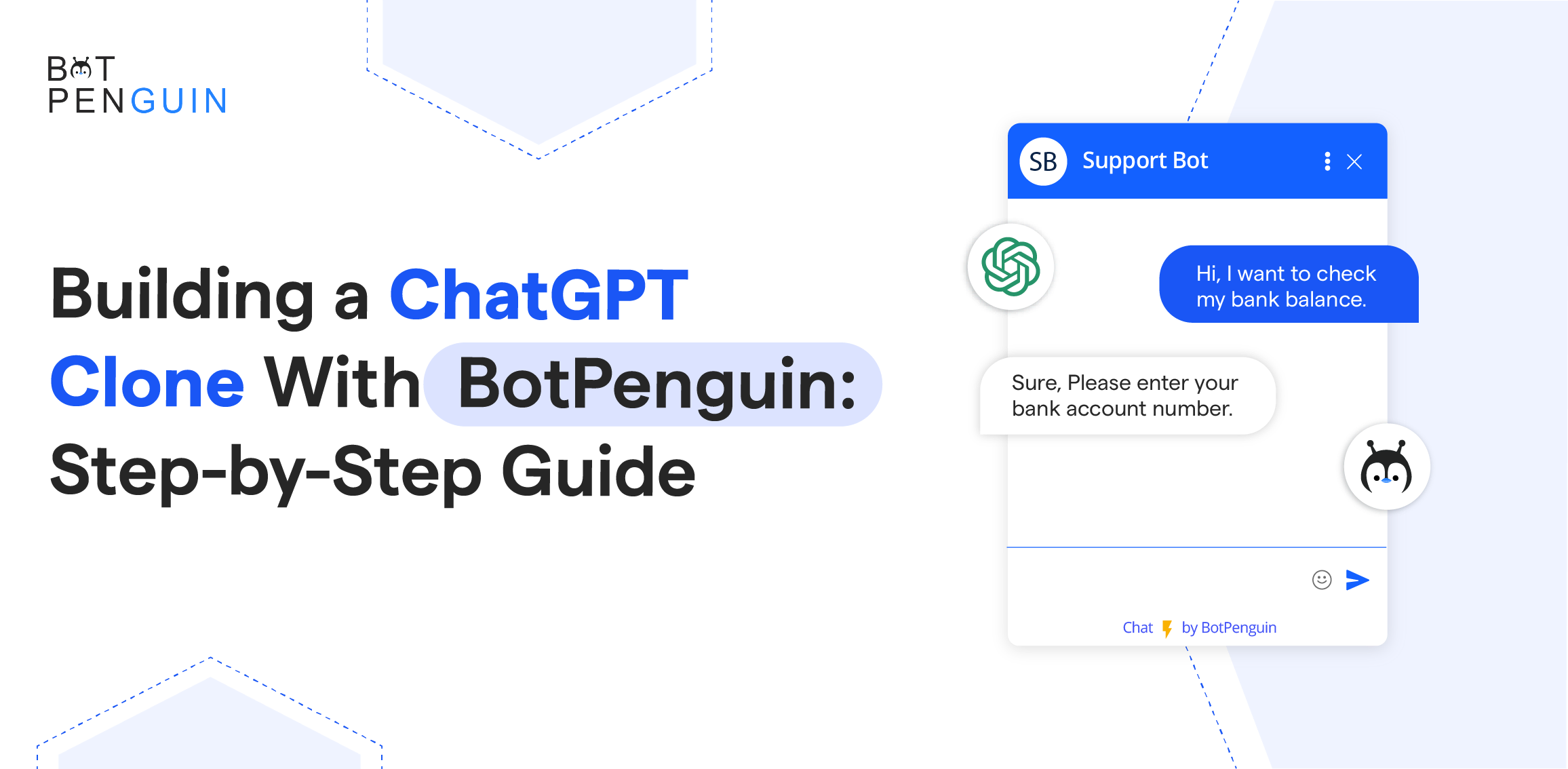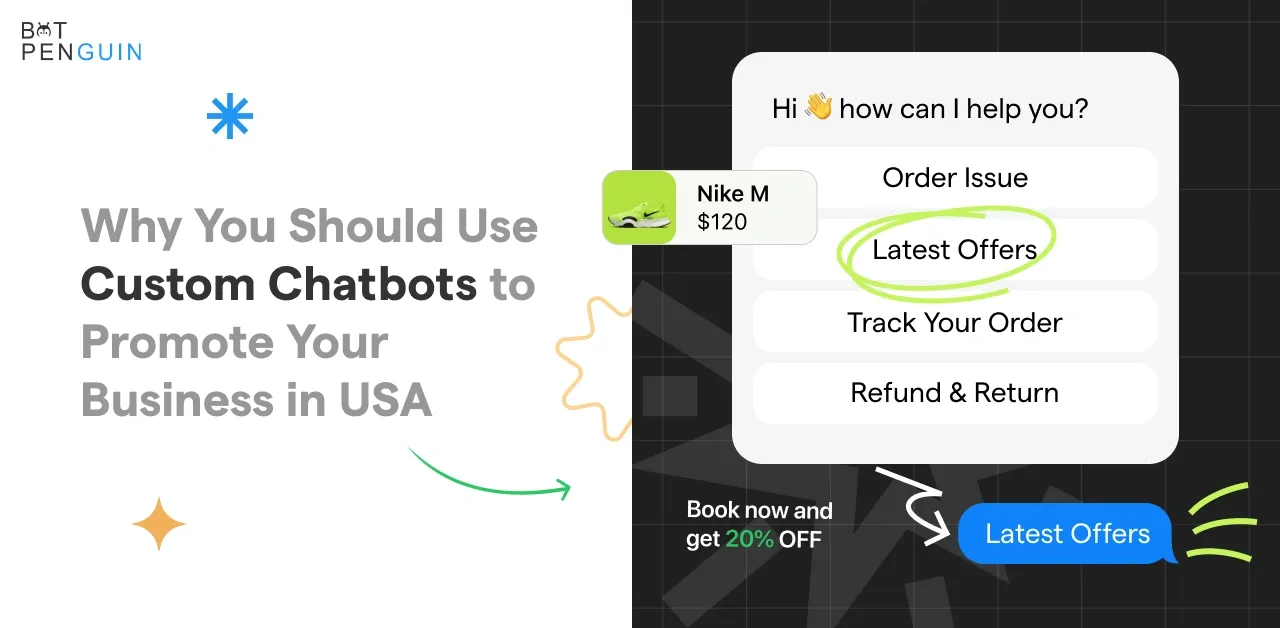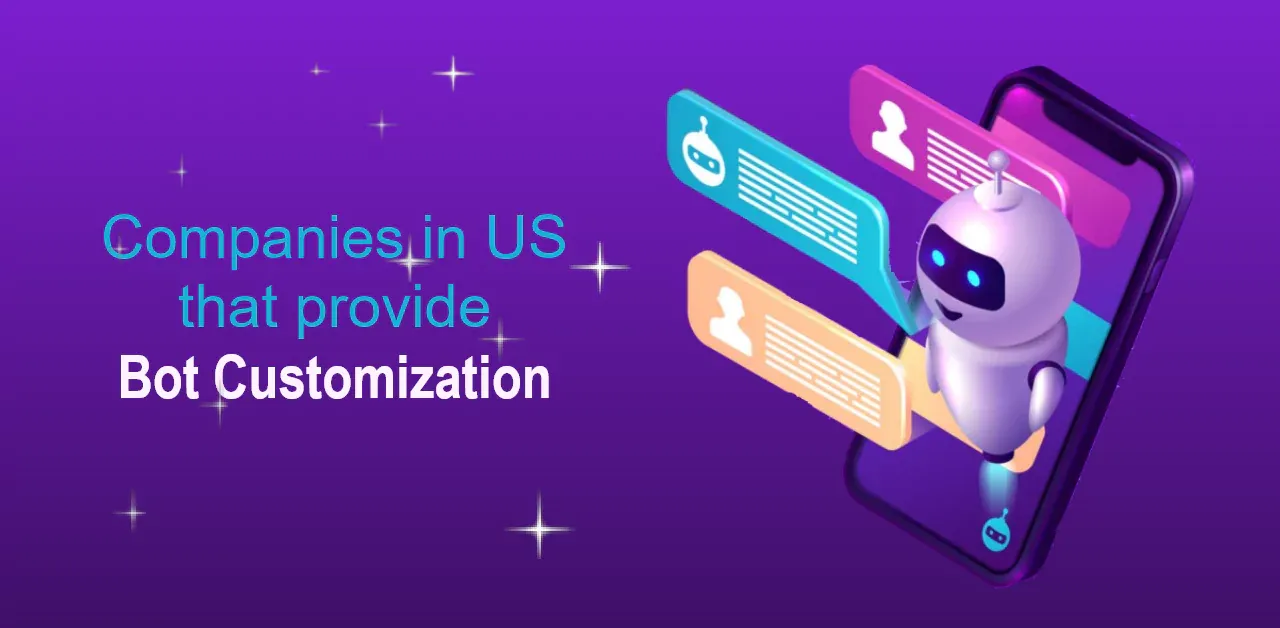Introduction
ChatGPT is a marvelous tool that answers your queries 24/7 without breaks. However, it is far from perfect. Its glaring limitations make it impossible to maintain a constant pace of tasks.
It's time to stop cursing at the GPT model and start finding a practical solution.
You can waste time switching from one language model to another; better yet, you can create your own mind-bogglingly intelligent chatbot based on the ChatGPT model.
The latter option, building a ChatGPT Clone, may seem far-fetched, but this practical can quickly become your reality. You can customize the ChatGPT to your use case, improving its accuracy, relevancy, and brand alignment.
This article will discuss the step-by-step process of creating your ChatGPT-like chatbot using BotPenguin.
So, let’s dive in.
Why Build a ChatGPT Clone?
Why go the extra mile to build a ChatGPT Clone tailored to your unique needs in a world brimming with chatbots? Let's dive into why businesses increasingly opt for custom chatbot solutions.
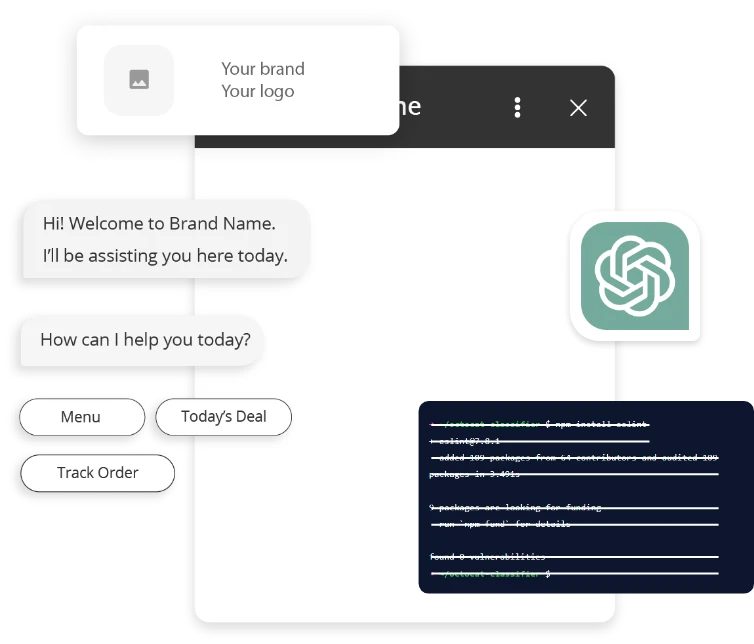
Focus on Specific Needs or Industry
Generic chatbots can only take you so far. To laser-focus on addressing business-specific requirements and industry nuances, a custom ChatGPT Clone is a more reliable solution. Whether streamlining customer queries or providing personalized suggestions, a customer chatbot ensures a seamless user experience that aligns perfectly with your business objectives.
Gain Greater Control Over Data and Privacy
As data becomes the new gold, privacy is fading away one access permission at a time. But there is still hope.
You have complete control over the data of your custom-made ChatGPT clone processes, as no 3rd parties are involved. You can safeguard sensitive information and assure customers of data security, invoking their trust and confidence in your brand.
Customize the Chatbot’s Tone and Personality
Ready-made chatbots often have pre-loaded personas that may not align with your brand voice or customer base.
However, ChatGPT clones provide much-needed customization to build your chatbot’s brand uniform persona. You can tailor the tone, personality, language, answer length, avatar, & more, creating a mirror version of your brand identity.
This customization is vital to authentic interactions, enhancing user engagement and brand loyalty.
BotPenguin: Your Guide to Building a ChatGPT Clone
So, you are ready to build your ChatGPT clone but are wondering where to start. The traditional approach involves a lot of coding, but lucky for you, BotPenguin does things differently.
It's a user-friendly, no-code chatbot platform that simplifies integrating ChatGPT into your favorite platform.
BotPenguin is a chatbot platform that allows you to create ChatGPT-driven chatbots for multiple platforms such as WhatsApp, Facebook, Instagram, Telegram, website, Shopify, WooCommerce, Squarespace, and WordPress.
It helps businesses quickly build chatbots for engagement, lead generation, marketing automation, customer support, eCommerce, & any other custom purpose.
Simplifying the Process
BotPenguin uses ChatGPT’s natural language processing powers to make your customers' chatbot interactions more human & engaging. It allows you to integrate any version of the ChatGPT model, be it 3.0, 3.5, or 4.0.
The platform has an easy-to-use interface, which helps you through the process of building and deploying a chatbot. You can easily create responses, define workflows, and add integrations. BotPenguin provides 40+ business-ready templates that you can tailor to suit your needs and launch your chatbot in minutes.
Moreover, the platform allows you to train your ChatGPT clone on your resources, such as FAQs, documents, URLs, chat history, & more, ensuring your tailored chatbot answers business-specific questions accurately and leaves all users satisfied.
Using BotPenguin, you can create a ChatGPT clone for multiple platforms without worrying about the technical aspects.
Suggested Reading:
Key Features of BotPenguin
- Training the GPT model: Turn the ChatGPT clone into a seasoned assistant by training it on various data sources, like FAQs, documents, URLs, and chat history.
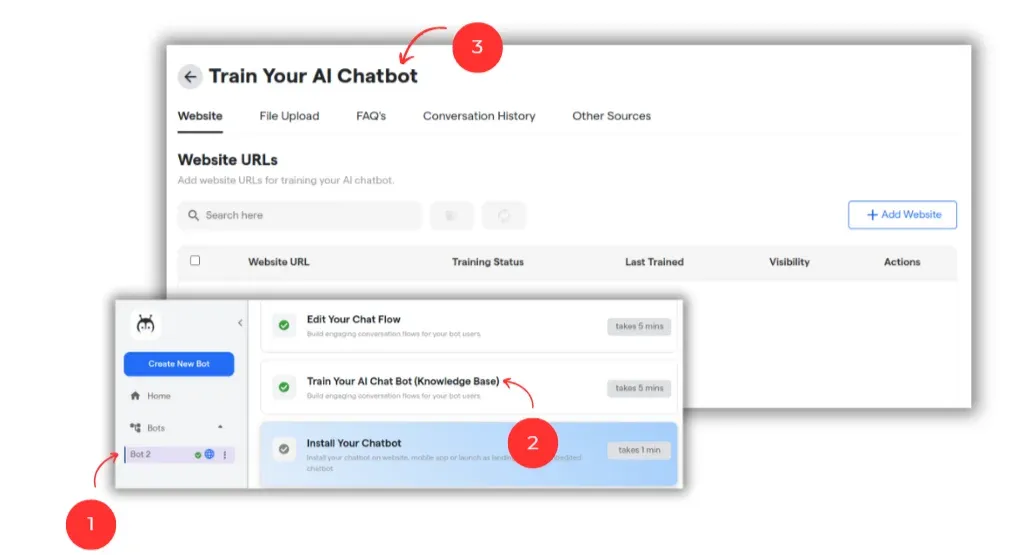
- Select Knowledge Base: Let your chatbot respond using ChatGPT's knowledge base, custom training data, or a mix of both.
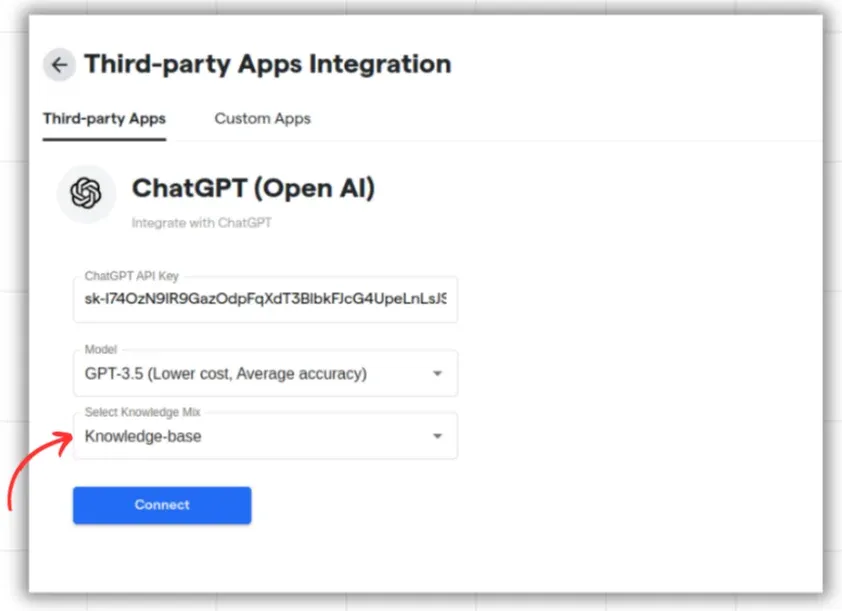
- Create Chatbot Persona: Establish a friendly and welcoming personality with which users will feel comfortable interacting.
- Select Tone, Length, & Format: Choose the conversational tone, response length, and messaging format that best suits your preferences.
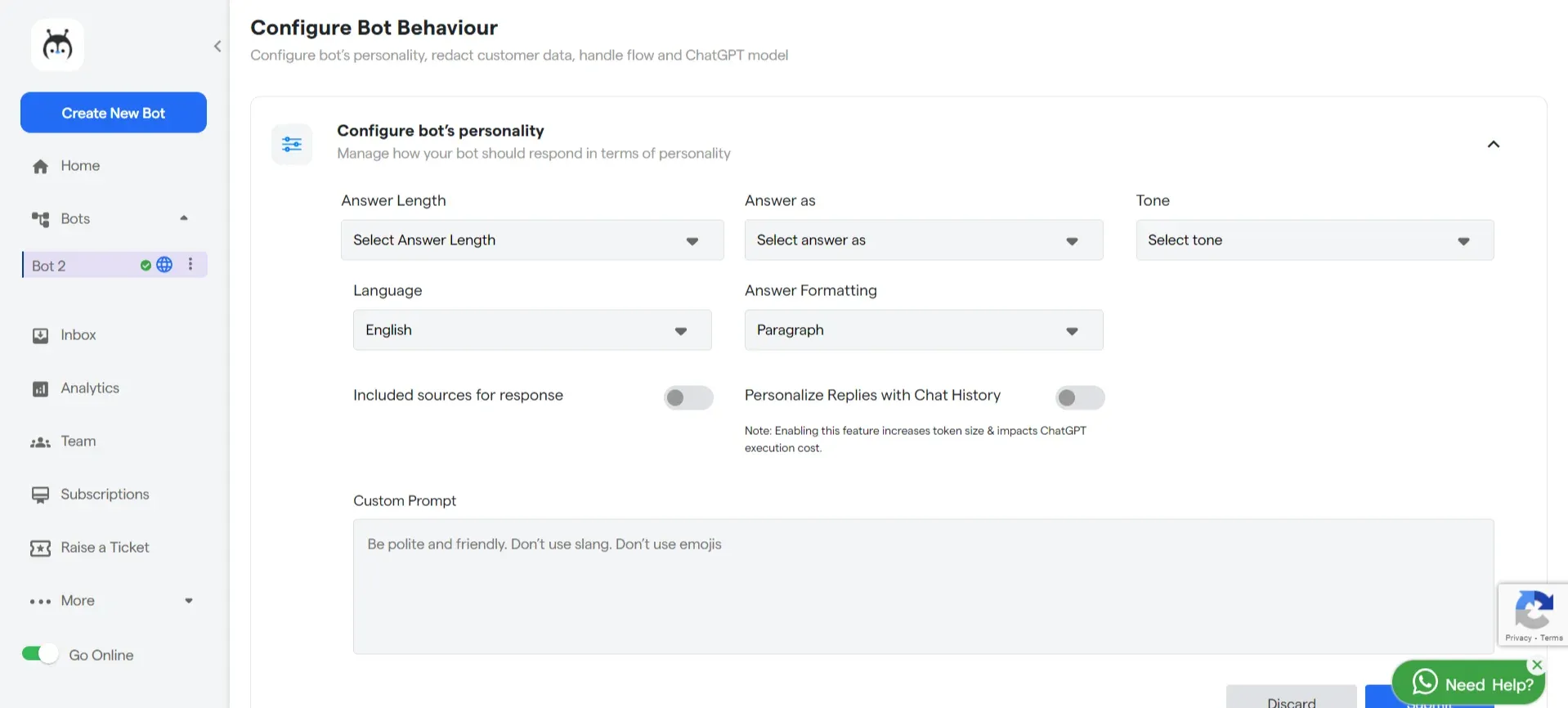
- Auto-Language Translation: Enable your ChatGPT clone to automatically translate text and respond to customers in their language, catering to your diverse user base.
- Personalize with Chat History: Utilize past chat interactions to personalize responses and create a more tailored user experience.
- Template-Based Chatbot Creation: BotPenguin allows you to choose from several templates that fit multiple industries, simplifying the creation of chatbots.
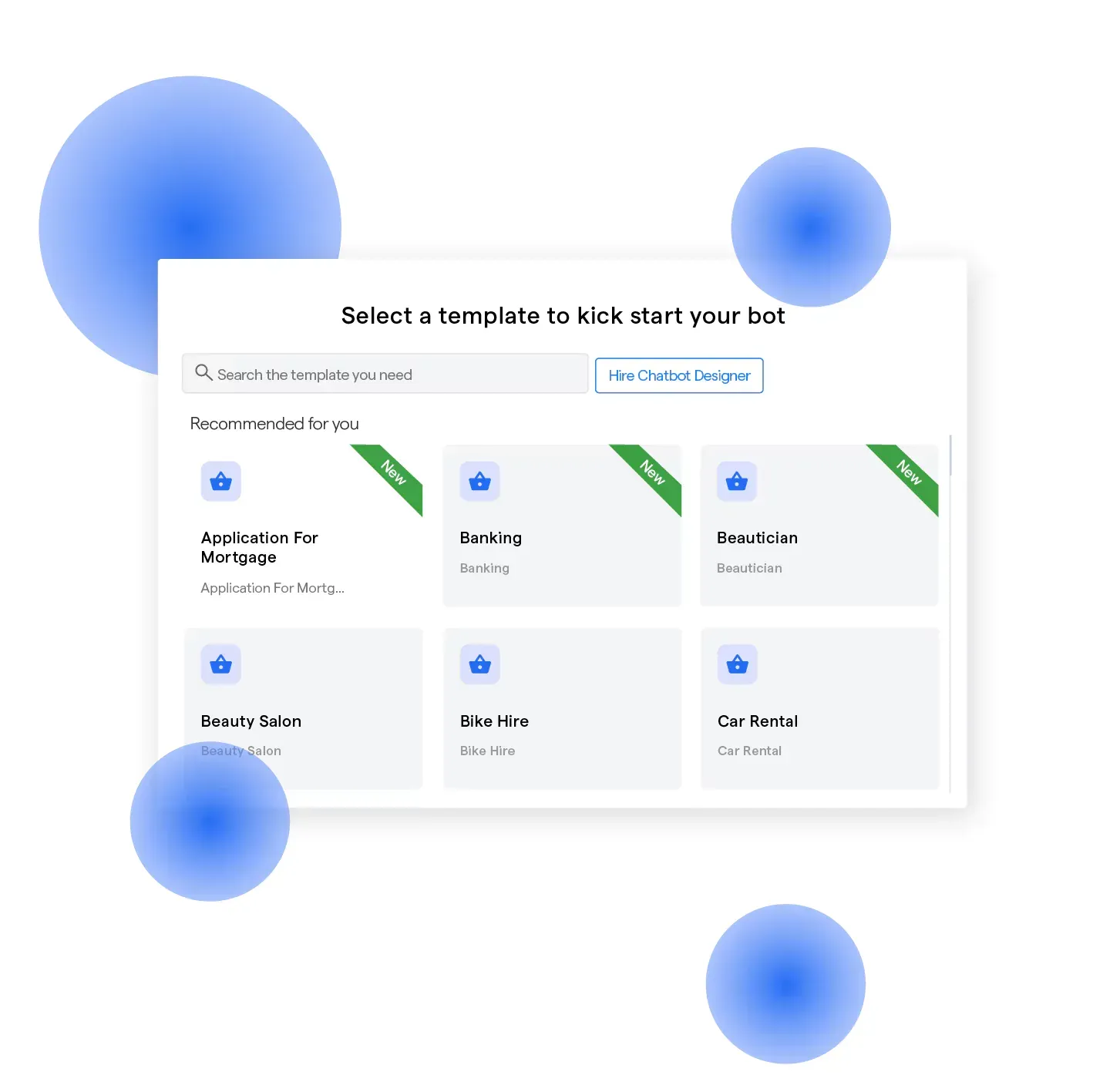
- Multiple Platforms: BotPenguin provides a platform for creating chatbots for various platforms such as Facebook, WhatsApp, Instagram, Telegram, website, Shopify, WooCommerce, Squarespace, and WordPress.
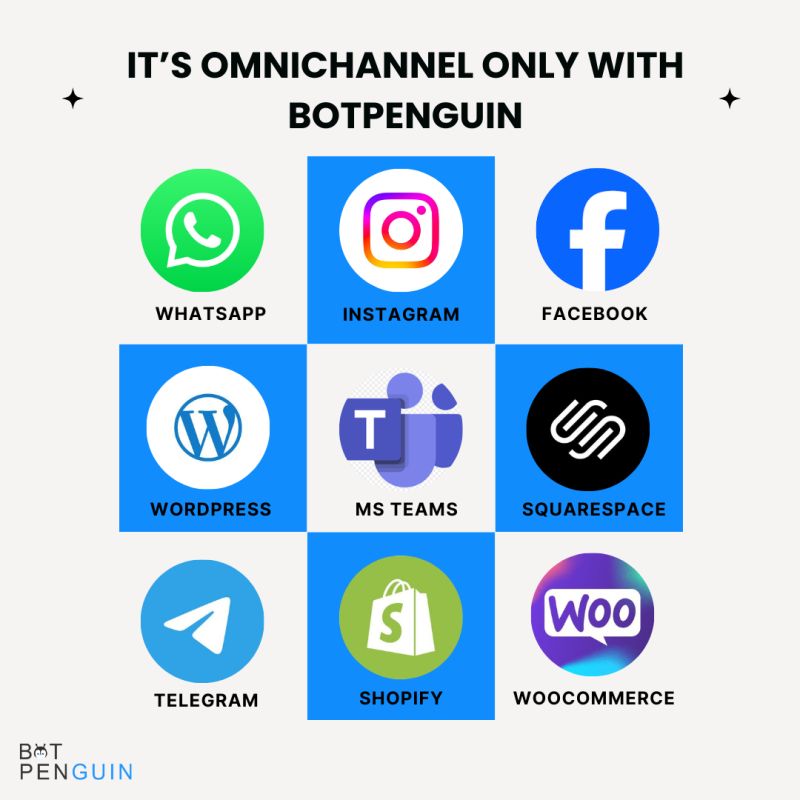
- 24/7 Availability: Your chatbot can provide customer service and engage with your audience 24 hours a day, 7 days a week.
All these features make it easy to build your own ChatGPT clone, which is trained on your data and responds perfectly to serve your customers 24/7.
Prerequisites Before Creating a ChatGPT Clone
Now that you know BotPenguin better; it is time to reveal the step-by-step guide to building your ChatGPT clone. By following these steps, you'll be well on your way to creating an engaging and intuitive AI chatbot.
Define Your Needs and Goals
The first step is to decide what exactly you want your chatbot to do and the results it will generate. Understanding what you want to achieve with your chatbot will help guide the development process.
Defining your goals lets you set a clear direction for your chatbot's purpose. Whether providing customer support, generating leads or simply engaging with your audience, having a specific goal in mind will streamline your development efforts.
Equally important is identifying your target audience. Knowing who you create the chatbot for will help shape its tone, style, and functionality. Consider your audience's demographics and characteristics to ensure that the chatbot resonates with them effectively.
Importance of Clearly Defining Goals and Target Audience
Clear and well-defined goals serve as a compass throughout the chatbot development process. They ensure that you stay focused and aligned with your desired outcomes. Defining your target audience helps tailor your chatbot to their specific needs and preferences, increasing its effectiveness.
By understanding your goals and target audience, you can design conversations that cater to their interests and expectations. This will enhance user satisfaction and engagement, leading to better outcomes for your business.
Identify Specific Tasks and Functions
Once you have defined your goals and target audience, it's time to identify the specific tasks and functions your chatbot will perform. Consider your target audience's needs and pain points and brainstorm how your chatbot can assist them.
For example, if your chatbot aims to provide customer support, consider the common questions or issues your customers face. Identify the tasks your chatbot can handle, such as providing product information, troubleshooting, or tracking orders.
By clearly defining these tasks and functions, you can design conversational flows that efficiently address your audience's needs. This ensures that your chatbot becomes a valuable tool for users, enhancing their experience and driving positive outcomes.
Gather Your Data
Data plays a crucial role in training your chatbot and generating accurate responses. It is the foundation for teaching your chatbot how to understand and communicate effectively.
Collecting relevant data sources is essential for training your chatbot to recognize and respond to different user inputs. This can include websites, documents, or even existing conversations with customers. The more diverse and representative your data is, your chatbot will perform better.
During the data-gathering process, it's essential to pay attention to the quality of the data. Ensure it is accurate, up-to-date, and reflects the language and tone you want your chatbot to adopt.
Importance of Data for Training and Generating Responses
Data is the building block for training your chatbot to understand and generate responses. By exposing it to a wide range of real-world examples, your chatbot can learn patterns and context to improve its performance.
The data you gather will be used later in training your chatbot's language model. It helps the model understand the nuances of different conversational contexts and generate appropriate responses accordingly.
BotPenguin gives you diverse options to gather data sources from websites, documents, or existing conversations and provides valuable insights into the language and terminology used by your target audience. This enables your chatbot to converse naturally and effectively, creating a seamless user experience.
Tips for Gathering Relevant Data Sources
The first place to collect data to train your chatbot starts from your one website or knowledge base, which includes articles, documentation, product pages, ebooks, articles, FAQs, etc. Secondly, look for publicly available information or conversations that align with your chatbot's purpose.
Additionally, analyzing previous customer conversations can help identify common questions and responses that your chatbot should be prepared to handle.
Remember to consider data privacy and compliance regulations when handling customer interactions or sensitive information. Also, always ensure that you are gathering data from reliable and trustworthy sources.
By following these tips and gathering relevant data, you'll give your chatbot the foundation it needs to deliver accurate and helpful responses to users.
Stay tuned for the next step in our step-by-step guide to building your ChatGPT clone using BotPenguin.
Creating ChatGPT Clone Using BotPenguin: The Off-the-Shelf Approach
This section will explore the step-by-step process of creating your own ChatGPT clone using BotPenguin. With its user-friendly interface and powerful features, BotPenguin makes it easy to build and deploy a chatbot that interacts with users like ChatGPT.
Sign Up for BotPenguin
To get started, visit BotPenguin's website and sign up. Creating an account is quick and straightforward, requiring only basic information.
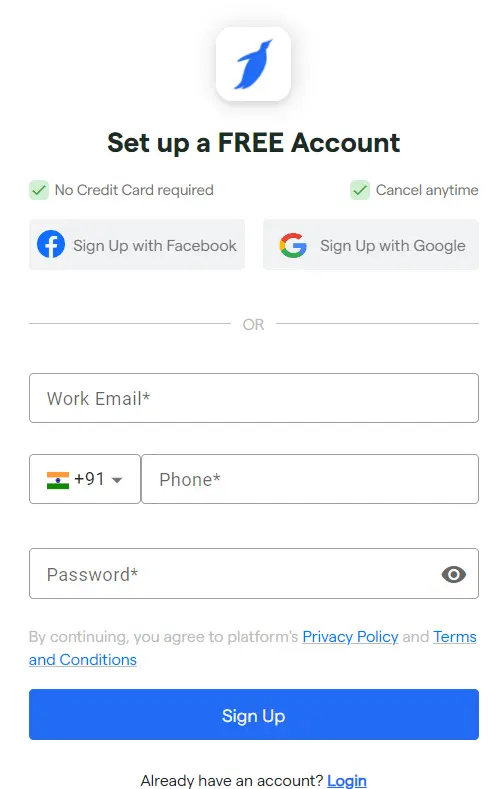
Once You are On the Dashboard, Click on the Create a Bot Button
After signing up, you'll be directed to the BotPenguin dashboard. Look for the "Create a bot" button and click on it to initiate the chatbot creation process.
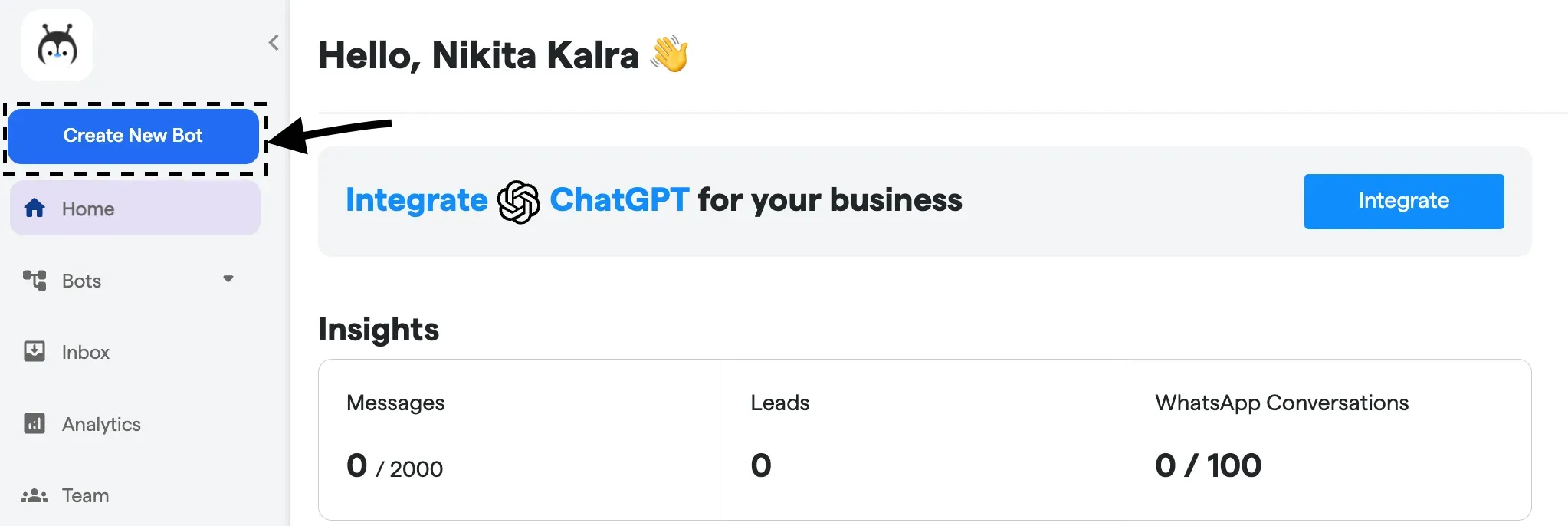
Choose Your Platform
BotPenguin offers integration with various platforms, including websites, WhatsApp, Facebook Messenger, Telegram, and more. Choose the platform that aligns with your goals and target audience. For instance, if you primarily engage with customers on your website, select the website integration option.
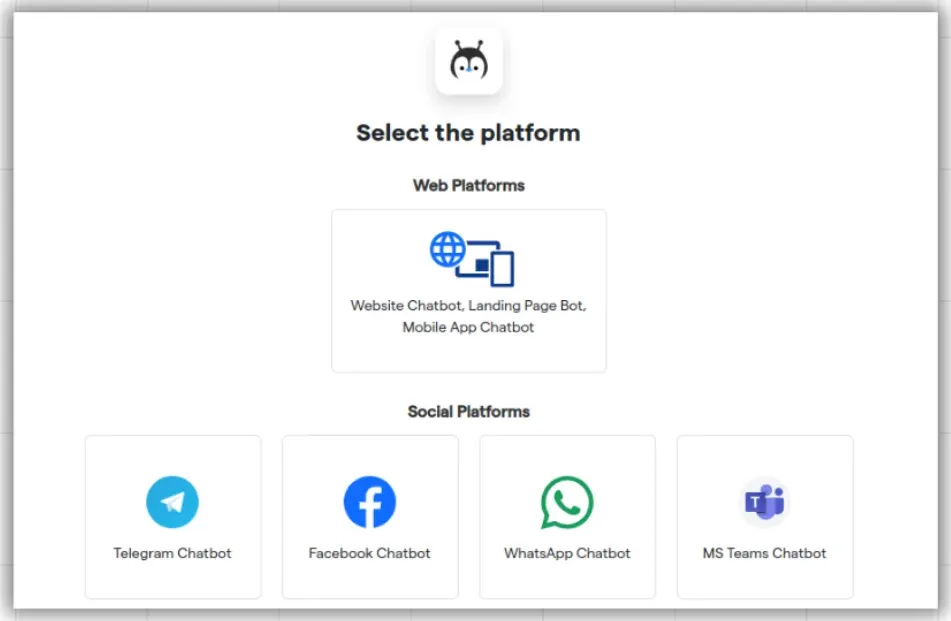
Follow the On-Screen Process for the Chosen Platform
Once you've selected your platform, BotPenguin will guide you through the setup process. Follow the on-screen instructions and configure your chatbot according to your preferences. You can customize its appearance, behavior, and conversational flows.

Third-Party App Integration
On the dashboard, look for the option labeled "Third Party App Integration." Select this option, and you'll be presented with 60+ integration choices. Among these choices, select ChatGPT and provide your OpenAI API key. This integration allows your chatbot to generate responses by using ChatGPT's language model.
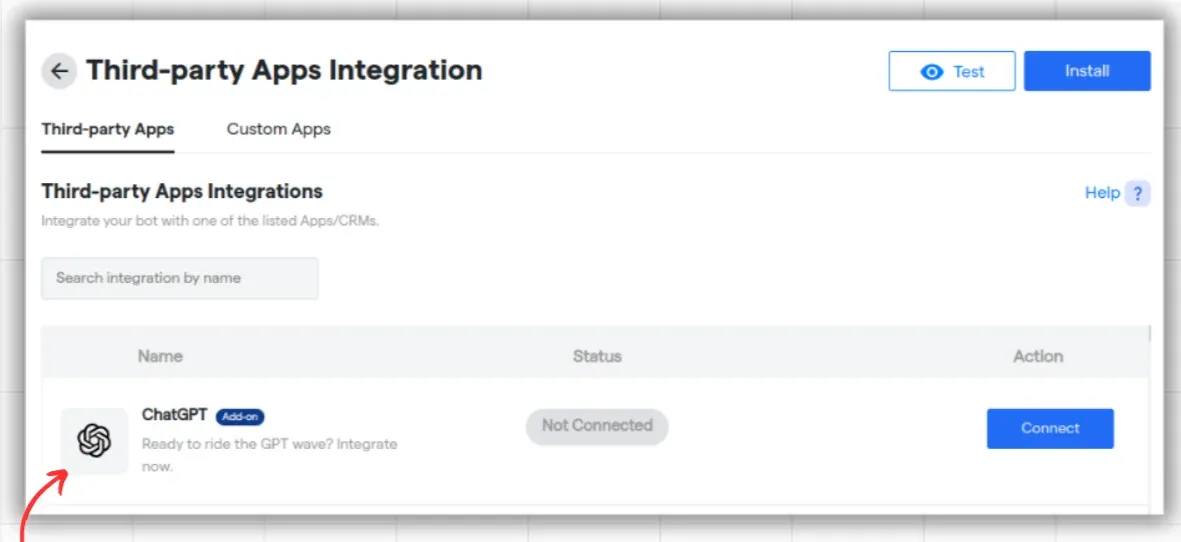
Note: BotPenguin Pricing
BotPenguin provides 100 free operations for ChatGPT integration. Beyond that, you must subscribe to a suitable plan based on your usage requirements. Refer to BotPenguin's pricing page for more details.
Training Your ChatGPT Clone
Once your chatbot is set up and integrated with ChatGPT, it's time to train it to handle user queries effectively. BotPenguin offers two training methods: Custom FAQ Training and Website or URL Crawling.
- Custom FAQ Training: To use Custom FAQ Training, you must upload your frequently asked questions (FAQs) file and relevant data sets. The chatbot will train itself using this information to provide accurate answers to customer queries.
- Website or URL Crawling: Alternatively, you can choose Website or URL Crawling to train your chatbot. With this method, your chatbot will scrape information from a website, including all its pages. By handling site-based queries like a pro, your chatbot becomes a valuable resource for users seeking information from your website.
More Integrations
BotPenguin offers a wide range of native integrations to enhance your chatbot's capabilities. These include integrations for automation, CRM, order tracking, customer support, productivity, scheduling, task management, and more.
Some famous native integrations are HubSpot, Zoho, Salesforce, Simplybook, Google Sheets & Calendar, etc. Go through all the integrations available and select the ones your need.
Test, Deploy, and You're Good to Go
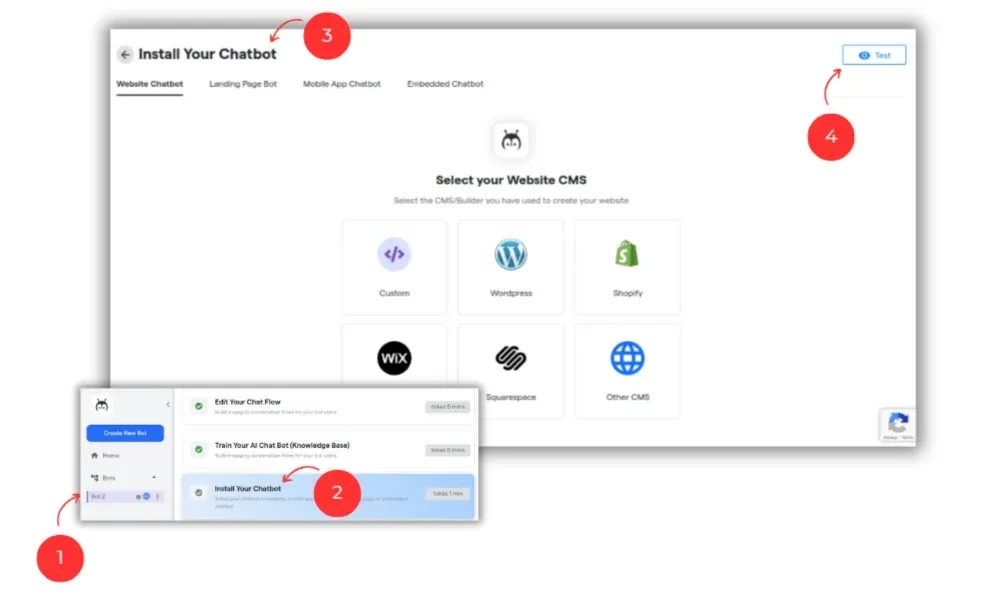
Once you have configured and trained your chatbot, it's time to test it thoroughly. Engage in conversations with your chatbot to ensure it understands user queries and generates accurate responses. Make any necessary tweaks or adjustments based on the results of your testing.
When you're satisfied with the chatbot's performance, deploy it to the chosen platform. Your chatbot is now ready to engage with users and provide them with valuable assistance.
Following these steps, you can create a powerful ChatGPT clone using BotPenguin. Its off-the-shelf approach and intuitive interface make it accessible to users of all backgrounds. Start exploring BotPenguin today and revolutionize your customer support and engagement efforts.
Suggested Reading:
How to train a Custom Chatbot on your own data with ChatGPT?
Creating ChatGPT Clone Using BotPenguin: The Custom-Made Approach
If you want experts to handle the construction of your chatbot, then BotPenguin has got you covered. The custom-made approach involves hiring a skilled BotPenguin ChatGPT developer that tailors your chatbot experience to meet specific requirements and achieve a conversational user interface that resonates with your target audience.
Hire Skilled BotPenguin ChatGPT Developer
Engaging a seasoned BotPenguin ChatGPT developer with over 5 years of experience can significantly boost the customization and effectiveness of your chatbot.
These professionals are adept in various programming languages such as Python, Java, Node.js, and more, enabling them to craft NLP-based applications and chatbots seamlessly. Their expertise in leveraging ChatGPT models ensures users a natural and engaging conversational flow.
ChatGPT Integration into Existing Software
One key task that a skilled BotPenguin ChatGPT developer can handle is integrating the ChatGPT functionality into your existing software ecosystem. This integration ensures that your chatbot harnesses the full power of ChatGPT to deliver high-quality responses and enhance user interactions.
ChatGPT Consultation
The developer can understand your specific needs and objectives for the ChatGPT clone through in-depth consultations. Clear communication and collaboration during this phase lay the foundation for a customized chatbot experience tailored to your business requirements.
Fine-Tuning ChatGPT Model
To optimize your chatbot's ChatGPT model, the developer uses fine-tuning techniques. This process involves adjusting parameters, enhancing training data, and refining the model's responsiveness to user queries, ultimately improving the chatbot's performance.
Custom ChatGPT Chatbot
Using their expertise, the BotPenguin ChatGPT developer designs and develops a custom ChatGPT chatbot that aligns with your brand voice, user expectations, and business goals. Tailored features and functionalities make the chatbot more effective in addressing user queries and providing relevant information.
Testing & Debugging ChatGPT Models
Thorough testing ensures the ChatGPT model functions accurately within the chatbot environment. The developer conducts extensive testing to identify and rectify errors, bugs, or inconsistencies in the model's responses, guaranteeing a smooth user experience.
Suggested Reading:
Upgrades, Ongoing Maintenance, & Training
After deploying the custom ChatGPT chatbot, the developer provides ongoing support, including software upgrades, maintenance, and training. These services ensure that your chatbot remains up-to-date, performs optimally, and evolves to meet changing user needs and technological advancements.
By following the custom-made approach with a skilled BotPenguin ChatGPT developer, you can create a powerful and tailored ChatGPT clone that elevates your user interactions and enhances your overall customer engagement strategy.
Collaborate with an experienced developer to unlock the full potential of ChatGPT within your chatbot solution and effectively achieve your business objectives.
Conclusion
In conclusion, creating a ChatGPT clone using BotPenguin offers a versatile and user-friendly solution for harnessing the power of AI in chatbot development.
Following the step-by-step guide outlined in this blog, users can effortlessly build a sophisticated and customized chatbot that leverages ChatGPT's language model for engaging user interactions.
Whether opting for the do-it-yourself or custom-made approach, BotPenguin provides the tools and integrations to streamline the chatbot creation process.
Embracing ChatGPT within your BotPenguin-powered chatbot opens up endless possibilities for enhancing customer support, driving engagement, and delivering personalized experiences. Start building your ChatGPT clone with BotPenguin today and revolutionize your conversational AI strategy.
Frequently Asked Questions (FAQs)
Can I customize the ChatGPT model for my chatbot?
Yes, BotPenguin ChatGPT developers can fine-tune the ChatGPT model to optimize its performance according to your specific requirements. This includes adjusting parameters, refining responsiveness, and enhancing training data for a more tailored and accurate chatbot experience.
How can a ChatGPT clone benefit my business?
A ChatGPT clone built with BotPenguin can greatly benefit your business by providing efficient customer support, enhancing user interactions, and personalizing experiences. It can handle customer queries, provide relevant information, and improve overall engagement, leading to higher customer satisfaction and increased productivity.
What is the role of integration in creating a ChatGPT clone?
Integration plays a vital role in creating a ChatGPT clone as it enables the chatbot to work seamlessly within your existing software ecosystem. Integrating ChatGPT ensures that your chatbot harnesses the full power of the model to deliver effective and accurate responses to user queries.
Can I get ongoing maintenance and upgrades for my ChatGPT clone?
Yes, BotPenguin ChatGPT developers offer ongoing maintenance and upgrades for your ChatGPT clone. This ensures that your chatbot remains up-to-date, performs optimally, and adapts to changing user needs and technological advancements in the future.
How can I test and debug my ChatGPT model?
A skilled BotPenguin ChatGPT developer performs thorough testing and debugging for the ChatGPT model. This process helps identify and rectify any errors, bugs, or inconsistencies in the model's responses, ensuring a smooth and error-free user experience.
Is it possible to train the ChatGPT model for specific use cases?
ChatGPT models can be fine-tuned and trained for specific use cases. BotPenguin ChatGPT developers have the expertise to customize the model according to your business needs, enabling your chatbot to deliver more accurate and context-specific responses.
